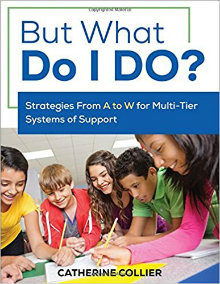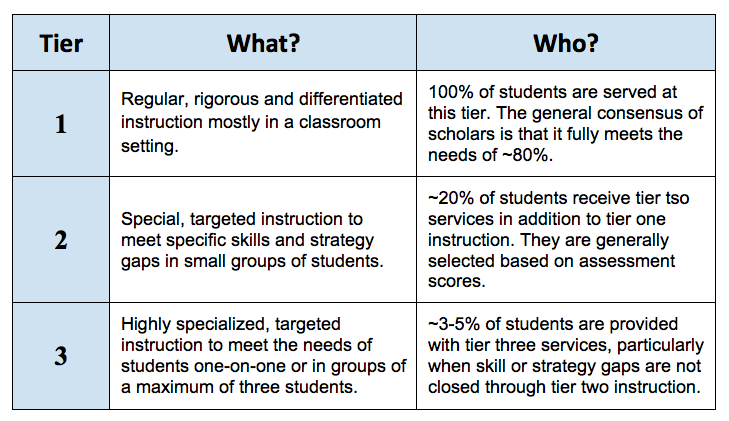A Guide to Multi-Tier Systems of Support
But What Do I Do? Strategies From A to W for Multi-Tier Systems of Support
By Catherine Collier
(Corwin, 2017 – Learn more)

There are few districts, schools, or classrooms that are not impacted by the profession’s move to a multi-tier systems of support (MTSS) model. Put in different terms, Response to Intervention (RTI) is everywhere.
The theory is that to meet the needs of all learners there must be instruction offered at a minimum of three tiers or “a layered continuum of evidence-based practices and procedures” (p. 1).
The Big Picture
But What Do I Do? Strategies From A to W for Multi-Tier Systems of Support is a good tool. The author states the purpose of the book is “to summarize evidence-based, positive, proactive, and responsive classroom learning and behavior intervention and support strategies for teachers” (p. 2). Despite the somewhat illogical alphabetical organization, it does meet that goal.

- Identify problem.
- Measure the problem (assess).
- Set goals.
- Brainstorm interventions.
- Plan intervention setting.
- Implement intervention.
- Monitor the student’s response to the intervention.
- Analyze the response patterns.
- Repeat
The strategies offered in the book fit into the planning, implementation, and monitoring of interventions. Put another way, the strategies are the interventions that teachers can apply to help students be successful.
Additional tools offered are systems and charts for monitoring the intervention applied and the effect it has on individual students.
The Strategies
The rest of the book consists of strategies for ameliorating both academic and behavioral gaps. The strategies are carefully shared with detailed discussions of the purpose(s), directions for use, research base, and hints to help teachers use each with English language learners.
Above, I alluded to my concern that the organizational structure of the book made it difficult to navigate. The strategies, while by and large solid, are presented in alphabetical order. This makes it hard to find just the strategy needed. Say, for example, a teacher is looking for a strategy to help her with a student who calls out frequently in class, she would need to page through the entire book to find one. The index isn’t detailed enough for a quicker search. In the preface, the author refers to a “selection grid,” but it seems to be missing from the book.
Despite this concern. But What Do I Do? Strategies From A to W for Multi-Tier Systems of Support is a good text for many teachers’ resource shelves.
Rita Platt (@ritaplatt) is a National Board Certified Teacher with master’s degrees in reading, library, and leadership. Her experience includes teaching learners in remote Alaskan villages, inner cities, and rural communities. She currently is a teacher-librarian, teaches graduate courses for the Professional Development Institute, and writes for We Teach We Learn. She has recently launched her MiddleWeb blog, Heart of the School.



































